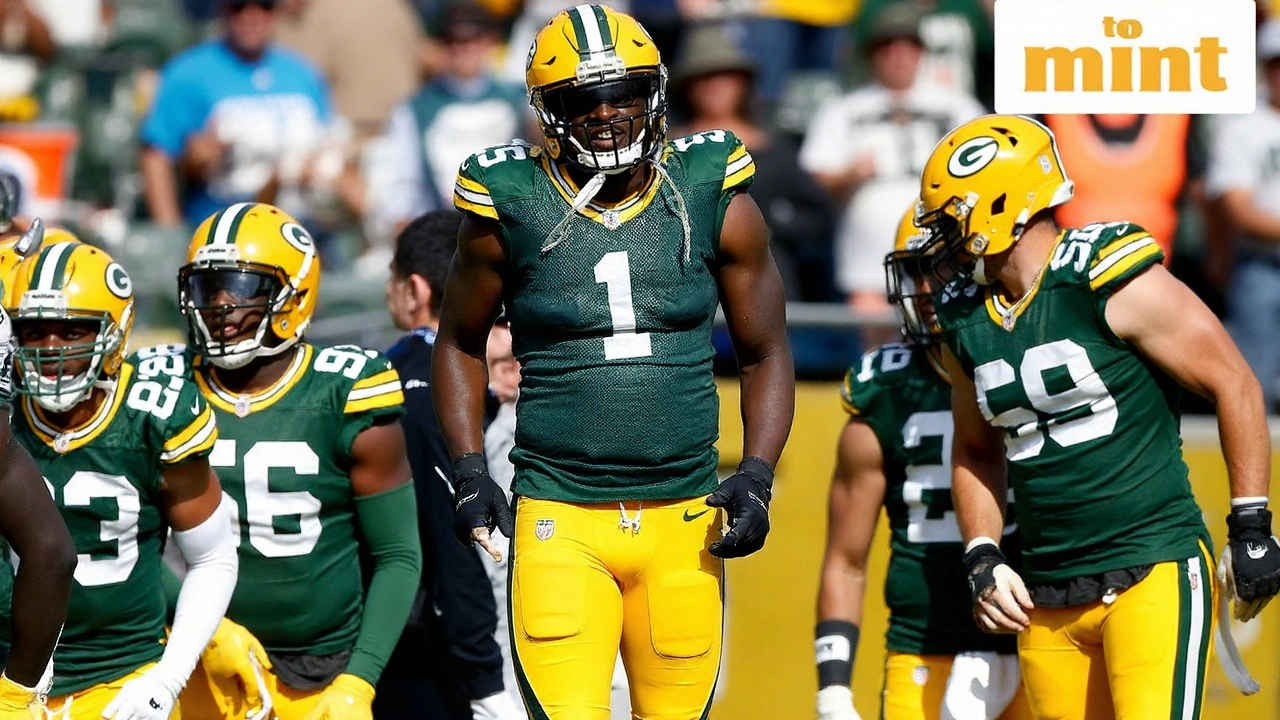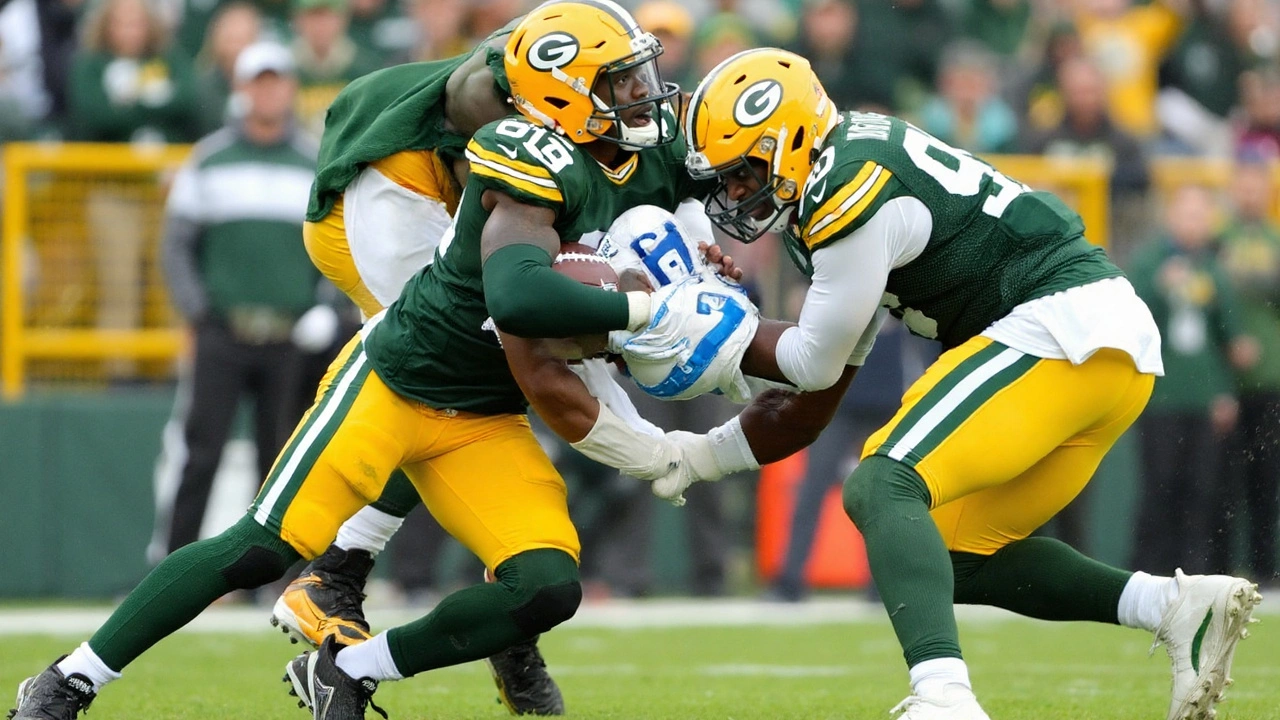Fog, clouds, and a classic Lambeau night
Fog rolled in under the lights at Lambeau Field, the kind that turns halos around the bulbs and makes every breath look like steam. The Packers vs Commanders weather forecast—patchy fog, low clouds, and a chilly night—delivered the kind of scene people picture when they hear "Thursday Night Football" in Green Bay. It felt like fall had clocked in early.
For fans, it was a layered-up affair with the familiar buzz that comes when temperatures dip and sound hangs in the air. The fog was patchy rather than dense, creating a visible sheen across the bowl without swallowing the field. Visibility held steady enough for deep shots, and the footing looked secure, a sign the field crew had the surface ready for a damp night without turning it into a slip-and-slide.
Importantly, there were no delays. The fog never thickened to the point that officials or broadcast crews had to pause play. The ball stayed dry enough to throw, kick, and return, and both sidelines treated the conditions as a variable—not a problem.
Kick mechanics did reflect the chill. Cooler air can make the ball feel a touch heavier, and teams typically adjust their range math by a yard or two. But there wasn’t the kind of gusty crosswind that forces emergency changes on special teams. Returns were cautious early, more about field position than hero shots, and that matched the conservative approach both staffs took in the opening quarter.

Did the weather change the game plan?
Not in any way that swung the score. Green Bay won 27-18, and the production told the story. Jordan Love was decisive, finishing with 292 passing yards and two touchdowns, carving out most of his gains in the intermediate windows where fog and cloud glare are least disruptive. The Packers kept the pace humming, mixing tempo with short-on-rhythm throws that trimmed the risk of slippery ball handling.
Washington’s rookie quarterback Jayden Daniels answered with 200 yards and two scores of his own. He stayed calm, managed the clock, and found outlets when the coverage shell stretched. If the conditions offered any edge, it was subtle: defenses were less eager to roll out exotic late-rotation looks in the haze, so both passers saw more of what they expected before the snap. That’s good news for timing routes and option concepts.
On the ground, neither side had to abandon plan A. The surface held, and cutback lanes were available. Coaches often worry about traction on damp nights—one bad plant can turn a five-yard gain into a loss. That didn’t happen here with regularity. Linemen found stable footing, and the edge rushers kept leverage rather than sliding past landmarks. The game felt physical, not messy.
Where the weather did show up was in how the ball behaved on contact. You could see receivers secure with two hands through the catch and ride it to the turf. No gratuitous one-handers. Quarterbacks kept their gloves handy on the sideline to keep grip consistent. That’s standard in cool, moist air, and it’s one of those small choices that saves a drive or two across four quarters.
The scoreline matched the flow. Green Bay played from in front, leaned on field position, and made Washington answer drives the hard way. Love’s command in the red zone stood out—quick decisions, simple leverage reads, no panic. Daniels fought to stretch drives with efficient, on-schedule throws and selective aggression down the seam. His two touchdown tosses showed poise in traffic, another encouraging checkpoint in a primetime road start.
Special teams avoided the kind of high-wire moment that weather sometimes creates. No botched holds, no punts dying mid-flight, no returner losing the ball in the lights. If you’re the visiting team at Lambeau, you sign for a clean sheet like that. Green Bay thrives on chaotic weather nights; Washington kept the kicking game tidy and lived to play the field-position chess.
From a tactical lens, the fog likely narrowed both coordinators’ appetite for late, high-risk adjustments. Communication stays simple when air is heavy and sound lingers. You don’t want a coverage bust because a check got lost in the noise. That can tilt a defense toward sound shells, encourage offenses to keep the ball in front, and produce the kind of mid-range duel we saw. The fact both quarterbacks put up multi-touchdown lines shows how manageable the conditions were.
For the Packers, this was about stacking competence. At 2-0, they got what they needed: clean operation, manageable third downs, a quarterback who never hurried his process, and a defense that tackled well in space. The offense didn’t need weather gimmicks; it needed precision, and it got it.
For Washington, the first loss of the season felt less like a warning siren and more like an early-season measuring stick. Daniels handled the stage, and the offense found ways to move the ball even when Green Bay sat on the seams. If there’s a lesson, it’s about finishing drives and translating steady movement into points against a defense that won’t beat itself in the cold.
As for the night itself, it belonged to Lambeau as much as the scoreboard. Early fall in Wisconsin means a sky the color of steel wool and a field that looks like it’s breathing. The fog lent drama without tilting the table. Fans got the scene they came for—clouds hanging low, breath in the lights, and a game that stayed sharp when it could have turned sloppy. Green Bay walked out unbeaten, Washington walked out tested, and the weather did what it often does here: set the mood, not the margin.

